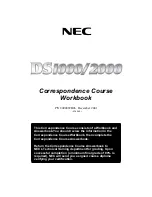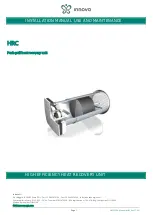
CEDAR Duo – declickle and auto dehiss
29
If the Level is too high, auto dehiss will treat some low-level signal as if it was noise and
attenuate it. This may make the signal sound muffled.
LF Bias (dB at 0Hz)
The LF Bias control allows fine control of the algorithm below 5kHz. It has no effect on higher
frequencies.
Use positive values for material that exhibits prominent low- and mid-frequency noise. Examples
of this may include 78rpm records and microgroove LPs. Use negative values when there is
relatively little low- and mid-frequency noise, and the noise content is predominantly hissy.
Attenuation (dB)
This is the maximum amount of noise attenuation applied at any given frequency at any given
moment. If the algorithm determines that the noise attenuation at any moment should be less
than the ATTEN that you select, the lesser figure will be applied.
L-R / M-S
■
Select which channel or channels you are adjusting by repeatedly pressing the L-R / M-S
button.
■
Toggle between Left/Right and Mid & Side modes by pressing and holding this button for three
seconds or more.
MANL-OFF
■
Switch processing ON or OFF by pressing the button associated with the MANL-OFF option.
■
Toggle between MANUAL and AUTO modes by pressing and holding this button for three
seconds or more.
When the Duo is in Bypass, this is indicated by
BYP
and the MANL-OFF button is disabled. This
also disables the press & hold mechanism for jumping between MANL and AUTO modes. You
may press the BYPASS button in the Audio I/O page to cancel Bypass.












































